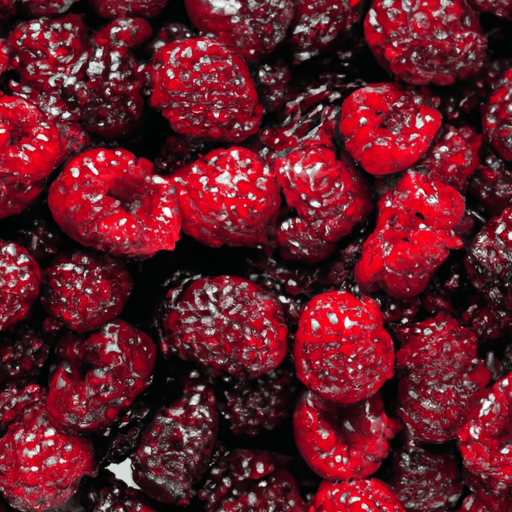Canned Boysenberries: A Delightful Addition to Your Culinary Creations
When it comes to versatile and flavorful fruits, canned boysenberries certainly deserve a moment in the spotlight. Bursting with sweetness and a tart edge, these vibrantly colored berries can take your cooking to new heights. In this blog post, we will dive into the world of canned boysenberries, exploring their taste, common uses in cooking, nutritional value, and uncovering some interesting history and facts along the way.
Taste Sensation: A Sweet and Tangy Symphony
With a deep purple hue and a luscious juiciness, canned boysenberries are known for their delightful balance of sweetness and tanginess. These berries exhibit a unique flavor profile that combines the sweetness of raspberries and blackberries with the tang of loganberries. This harmonious composition makes them a popular choice for adding a burst of flavor to a wide range of dishes.
Culinary Versatility: From Breakfast to Dessert and Everything In Between
Canned boysenberries possess the remarkable ability to elevate both sweet and savory creations. Here are some of the ways you can incorporate these delicious berries into your culinary endeavors:
1. Morning Delights
Start your day off right by incorporating canned boysenberries into your breakfast routine. Spoon them over a steaming plate of fluffy pancakes or waffles for a delightful burst of flavor. Mix them into a creamy bowl of yogurt or oatmeal, and top with a sprinkle of granola for a refreshing and nutritious morning treat.
2. Succulent Sauces and Dressings
Canned boysenberries can transform a simple sauce or dressing into something truly extraordinary. Whip up a tangy boysenberry vinaigrette by blending these berries with olive oil, balsamic vinegar, a hint of Dijon mustard, and some honey for sweetness. This dressing pairs beautifully with fresh summer salads or grilled meats.
3. Delectable Desserts
Unleash your creativity in the dessert realm with the help of canned boysenberries. Bake a luscious boysenberry pie, with the berries nestled in a flaky crust and topped with a dollop of whipped cream. Alternatively, fold these juicy gems into a creamy cheesecake batter for a delightful twist on a classic dessert. You can also swirl boysenberry compote into vanilla ice cream or use it as a filling for crumbly tarts – the options are endless!
Nutritional Benefits: A Berry Worth Savoring
Besides their irresistible taste, canned boysenberries bring a host of nutritional benefits to the table. Packed with antioxidants, fiber, and essential vitamins, they can contribute to a healthy and well-rounded diet. These colorful berries offer a rich source of vitamin C, which helps support the immune system and boosts collagen production. Additionally, they are low in calories and fat, making them a guilt-free addition to your culinary creations.
A Dash of History and Fun Facts
The story behind boysenberries is as intriguing as their taste. Created by Rudolph Boysen, a horticulturist, these berries are a cross between loganberries, blackberries, and raspberries. After facing cultivation challenges, the cultivation of boysenberries was further developed by Walter Knott, who successfully grew and distributed them commercially. Knott’s Berry Farm, a famous amusement park in California, owes its origin to Walter Knott’s boysenberries and his wife’s famous berry preserves.
Interestingly, boysenberries are often referred to as a “caboose berry” due to their sour taste when unripe. It’s only when they reach their full maturation that they develop their distinctive sweetness and tanginess, making them perfect for canning.
In Conclusion
Canned boysenberries are a culinary gem that adds a burst of flavor to a wide variety of dishes. Their unique taste, versatility, and nutritional benefits make them worth keeping on your pantry shelf. Whether you’re starting your day with a boysenberry-infused breakfast or indulging in a decadent dessert, these vibrant berries will never disappoint. So go ahead, explore the wonders of canned boysenberries, and elevate your cooking to new levels of deliciousness!
Canned Boysenberries
Origin: The boysenberry is a hybrid fruit that originated in California in the 1920s. It was created by horticulturist Rudolph Boysen, who crossed raspberry, blackberry, and loganberry plants to produce this unique fruit.
Common Uses: Canned boysenberries are commonly used in various culinary applications, including baking (such as pies, tarts, and muffins), dessert sauces, jams, jellies, and fruit preserves. They can also be used as a topping for desserts like ice cream or yogurt.
Nutritional Benefits: Boysenberries, whether fresh or canned, are a good source of dietary fiber, vitamin C, vitamin K, manganese, and antioxidants. They are low in calories and fat and contain no cholesterol or sodium.
Unique Properties: Boysenberries have a distinct flavor and appearance. They are large and dark purple in color, similar to blackberries, but have a more tart taste with a hint of sweetness. These berries are known for their juiciness, making them ideal for use in various culinary preparations.
Historical Significance: Boysenberries hold historical significance as they were created through the efforts of Rudolph Boysen. This hybrid fruit gained popularity in the early 20th century and has since become a favorite ingredient in many desserts and baked goods. Its unique flavor and versatility continue to make it a cherished ingredient among food enthusiasts.




Use the share button below if you liked it.
It makes me smile, when I see it.